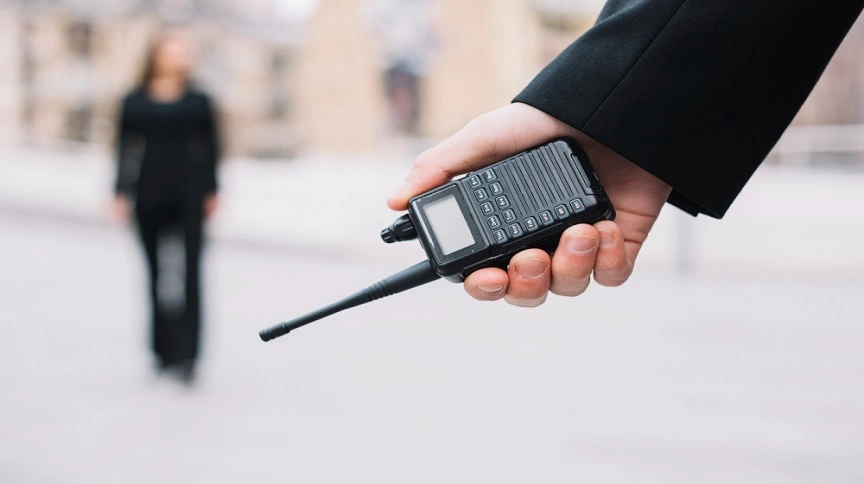What is a Digital Voice Recorder?
A digital voice recorder is a portable electronic device designed to capture and store audio recordings in digital format. Unlike traditional tape recorders, digital voice recorders offer enhanced sound quality, longer recording times, and the convenience of transferring audio files to a computer or other digital devices.
Key Components and Functionality
- Microphone: The primary component of a digital voice recorder is the microphone, which captures sound waves and converts them into electrical signals. High-quality microphones ensure clear and precise recordings, making them ideal for various environments and purposes.
- Analog-to-Digital Converter (ADC): The ADC converts the analog signals from the microphone into digital data. This process involves sampling the sound waves at a specific rate (measured in kilohertz) and encoding them into digital format.
- Digital Signal Processor (DSP): The DSP processes the digital data, enhancing the audio quality by reducing noise and optimizing clarity. Advanced recorders may have additional features such as voice activation, which starts recording only when sound is detected, saving storage space and battery life.
- Storage: Digital voice recorders use internal memory or removable storage (like SD cards) to save audio files. The capacity of the storage determines the maximum recording time, with higher capacities allowing for longer or higher-quality recordings.
- User Interface and Controls: Modern digital voice recorders feature intuitive interfaces with buttons or touchscreens for easy operation. Users can start, pause, stop recordings, and navigate through saved files. Some models include additional functions such as playback speed control, bookmarking, and file organization.
- Battery: Powering a digital voice recorder is typically done through rechargeable batteries or replaceable ones. Battery life varies based on usage and features but generally lasts several hours to days.
Recording Formats and Quality
Digital voice recorders can save audio files in various formats, with the most common being WAV, MP3, and WMA. Each format has its advantages:
- WAV: Offers high-quality, uncompressed audio but results in larger file sizes.
- MP3: Compresses audio to reduce file size while maintaining reasonable quality, ideal for longer recordings.
- WMA: Another compressed format that balances quality and file size, often used in Windows environments.
The quality of recordings is influenced by the bitrate (measured in kbps). Higher bitrates result in better audio quality but larger files, while lower bitrates save space at the expense of sound fidelity.
Transferring and Managing Files
Most digital voice recorders have USB ports or Bluetooth connectivity, allowing users to transfer audio files to computers, smartphones, or cloud storage. This feature enables easy sharing, editing, and archiving of recordings. Some advanced models offer Wi-Fi capabilities for wireless file transfer and integration with transcription services.
Additional Features
Many digital voice recorders come with additional features to enhance usability and functionality:
- Voice Activation: Automatically starts recording when sound is detected and pauses during silence.
- Noise Reduction: Filters out background noise for clearer recordings.
- Bookmarking: Allows users to mark important sections within a recording for easy reference.
- Playback Speed Control: Enables users to adjust playback speed for faster review or detailed listening.
- Built-in Speaker and Headphone Jack: Provides options for immediate playback and private listening.
FAQs
1. What is the difference between a digital voice recorder and a smartphone recorder?
Digital voice recorders capture high-quality audio with superior microphones, noise reduction, and longer battery life compared to smartphone recorders. They also offer more storage options and dedicated controls for easy operation.
2. How long can a digital voice recorder typically record?
The recording time depends on the device’s storage capacity and the chosen audio quality. High-capacity recorders can store hundreds of hours of audio at lower quality settings, while higher quality recordings will reduce the available recording time.
3. Can digital voice recorders be used for transcription purposes?
Yes, many digital voice recorders support integration with transcription software, and some models even offer built-in transcription features. Audio files can be transferred to a computer and converted into text using transcription services.
4. Are digital voice recorders easy to use for beginners?
Yes, most digital voice recorder are designed with user-friendly interfaces and straightforward controls. Beginners can quickly learn to operate these devices, while advanced users can explore additional features for enhanced functionality.
Digital voice recorders are powerful tools for capturing and managing audio recordings with superior quality and convenience. Understanding their components, functionality, and features, along with using an RF Signal Detector, can help you make an informed decision when choosing the right device for your needs.
